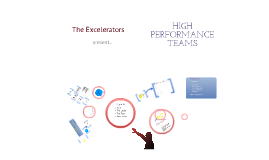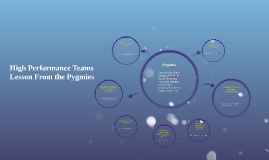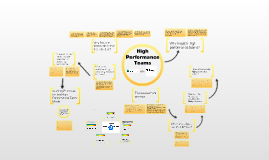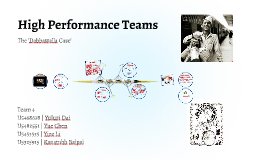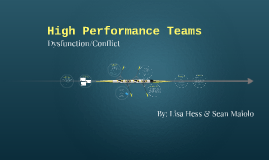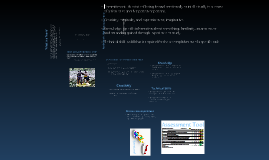High Performance Teams
Transcript: Global and cross-functional teams present a number of new challenges for organizations (e.g. communication and alignment), yet they have the potential to transform the way traditional, siloed work has been done. The assessment process can be used in a variety of settings: For newly formed teams (Recommended: 6 months for the full suite and 3 months for the team survey only) Assisting new leaders in understanding current team dynamic Potential applications include: As a developmental tool to help improve team, individual, and leader performance To provide an organization-wide indicator of team health A research-driven model has been developed to assess high performance. At Whirlpool, developing and maintaining high performing teams is a business imperative. It creates sustainable competitive advantage and drives business results. To generate these outcomes, the first step is to assess the health of teams across the organization. Feedback is provided on three levels: leader, team, individual Data is reported in a format that is detailed, insightful, and tailored Includes an in-depth Action Planning guide that matches frequently-occurring team gaps with a menu of practical solutions Shared accountability for results makes individual and team performance more urgent, visible and powerful. Members fully understand the direct consequences and impact their actions (i.e., success or failure) will have on the team and organization. Given the greater visibility of results, individuals will push themselves to exceed performance targets and consistently raise the bar on expectations. Leadership coaching to strengthen results through teams Consult and advise senior leaders on how to support ongoing development through support, reinforcement, and additional feedback Facilitate team off-sites that are focused on debriefing results and generating team goals to improve team performance Ongoing team consulting to ensure teams remain focused on successfully implementing their action plans Why invest in high performance teams? As it is unlikely that the external environment will become less demanding and uncertain, building high performance teams represents an organization's best chance for highly responsive, self-directed, and agile organizations. When should you use the HPT tool? This assessment is NOT recommended for: Selecting teams or determining team composition Groups that do not share common goals Mutual respect and camaraderie requires high performing team members to go above and beyond their normal day-to-day responsibilities in supporting the efforts of other members and facilitating successful organizational functioning. A sense of mutual concern and solidarity for each other’s well-being creates a highly supportive and trusting environment. A collaborative environment promotes respect and the sharing of diverse perspectives, therefore enhancing creativity through new and innovative ideas. How can you develop high performance teams? Constructive conflict provides a forum for challenging convention, promoting creativity and risk-taking, and enhancing group decision-making. This combination of skills will enable high performing teams to drive extraordinary results. It also challenges team members to push their comfort zones and personal growth goals. If these elements are not part of the team dynamic, it can create complacency, “group think” and reinforce mediocrity. Developing the model involved a focus on the factors that contribute to high performance (as opposed to "good" or "above average"). More than ever before, the real work of business is conducted by teams, and impressive results are more likely to be delivered by superbly functioning, high performance teams. The research resulted in five dimensions of high performance... Competent teams can become high performance teams The team leader is ultimately accountable for team performance Team members are accountable for contributing fully to whole team success and for rising above a silo mentality High performance team members have insight into their own performance, effectively give and receive feedback, and take action on improving their gaps Over the years, there has been considerable research conducted on the formation, dynamics, and performance of teams. Guiding Principles for the High Performance Team Model and In order to achieve high performance, the first step for each team is to identify a clear and compelling performance challenge. It begins with the belief that high performing teams are critical to organizational health and productivity. Shared commitment to the vision and extraordinary goals is important to team success because these actions lead to the establishment of challenging and measurable goals and ensure team alignment and dedication on the most urgent priorities. High performing team members must set aside individual goals for the good of the team. When the team’s vision, goals or objectives are unclear, overlapping responsibilities and






